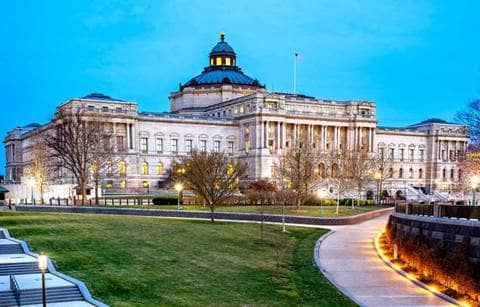The One, Big, Beautiful Bill (OBBB) signed into law on July 4, 2025 brings significant expansions to the 100% gain exclusion available under Section 1202 on the sale of qualified small business stock (QSBS). These changes further encourage investment in “small” domestic corporations by making the tax savings larger and more accessible. In fact, based on the government’s own budget estimates, it’s expected that the Section 1202 expansion will nearly double the overall expected impact over the next 10 years, increasing the annual savings to taxpayers by almost $4.5 billion per year once the provisions are in full effect. This is the most significant expansion of Section 1202 since the exclusion was permanently increased to 100% in 2010.
The changes are effective for all QSBS issued after July 4, 2025. Therefore, while existing stock is subject to the prior rules, future stock issuances that meet the revised QSBS requirements will fall under the new regime.
Key changes to Section 1202 under the OBBB
The OBBB contains three key changes that each significantly increase the tax savings of QSBS:
- Shorter holding periods. The holding period for QSBS to qualify for the 100% tax exclusion has always been five years, but the OBBB now phases in the exclusion between years three and five. While investments that meet the five-year holding period requirement will still qualify for a 100% gain exclusion, investors can now benefit from a 75% exclusion for stock held for at least four years and a 50% exclusion after just three years of holding QSBS. These changes are designed to stimulate investment by offering more immediate and escalating tax advantages as the duration of the investment increases — and to prevent the market distortions created by the cliff-effect under prior law where there was a significant disincentive to sell stock held for less than five years.
Stock acquired on or after Aug. 11, 1993, and prior to Sept. 28, 2010, can be eligible for a similar 50 or 75% gain exclusion. However, this older stock is subject to a 7% alternative minimum tax (AMT) preference. Importantly, the OBBB doesn’t impose an AMT preference on the new 50% and 75% phased-in gain exclusions on newly issued stock. This is a key distinction between older stock and newly issued stock and creates additional tax savings for the newer stockholders.
- Increased exclusion cap. Historically, the gain exclusion under Section 1202 was capped at the greater of $10 million or 10-times basis for each taxpayer. The $10 million exclusion floor was originally set in 1993 and hasn’t been increased since then. The OBBB increases the minimum gain exclusion from $10 to $15 million, with annual inflation adjustments beginning in 2026. This means that an individual, estate, or trust can now exclude, at a minimum, $15 million of gain on the sale of QSBS from their taxable income. This change was likely meant to reset the limitation to something closer to what it would have been, had it been adjusted for inflation since its original enactment. No change was made to the 10-times basis limitation.
- Higher asset threshold. Under the old regime, a “small” corporation was one whose tax basis in its assets never exceeded $50 million. The OBBB increases the “aggregate gross assets” limit for a corporation to $75 million along with continued inflation adjustments to that amount beginning in 2026. Similar to the increase to the minimum exclusion amount noted above, this change was likely intended to account for inflation since the original enactment. This increase in the gross asset limit will significantly expand the pool of corporations capable of issuing QSBS.
Importantly, each of these changes only applies to stock issued after July 4, 2025.
How will these changes impact both investors and corporations?
The OBBB changes to the Section 1202 QSBS gain exclusion will create significant opportunities for both investors and the corporations they invest in for many years to come.
Here are some of our initial reactions:
- Once disqualified corporations may qualify again. Corporations that previously surpassed $50 million of gross assets but stayed under $75 million may be able to issue QSBS again. Corporations in this scenario should consider this refreshed opportunity when considering funding and exit timelines. This could even be beneficial to investors who don’t expect to hit the three-to-five-year holding period since the basis in the newly issued stock might still be able to increase the 10-times portion of the maximum exclusion, even if that stock isn’t held for long enough to qualify for the gain exclusion itself.
- Companies may qualify for longer. Corporations will qualify to issue QSBS for a longer window of time because many of the other OBBB changes will generally decrease the tax basis of a corporation’s assets, and the $50 and $75 million gross asset thresholds are generally measured on a tax basis. Some of the relevant provisions include 100% bonus depreciation, increased Section 179 limits, expensing of certain manufacturing real estate that meets the qualified production property definition, restored deductibility of domestic research expenses, among others.
- Investors in later rounds of investment may qualify. Investors in later funding rounds have historically had a hard time obtaining Section 1202 exclusions because getting to the five-year holding period was challenging, and there was a greater likelihood that the $50 million asset threshold had already been exceeded. However, the phased-in exclusion for investors that have held their stock for only three years coupled with the increased gross asset limit to $75 million (plus the future inflation adjustments) will make it much easier for investors in later rounds to qualify. Companies that utilize a “buy-and-build” strategy can also more easily use this incentive to their advantage to attract investment and maximize tax savings.
- Refreshing old stock into new QSBS. The statute generally doesn’t permit previously issued stock to be refreshed into stock that qualifies under the new rules if the old stock either: (1) only qualifies for the previous Section 1202 exclusion rules (i.e., $10 million exclusion floor and five-year holding period), or (2) didn’t qualify as QSBS at all. However, the story doesn’t necessarily end there — at least under the right facts. If a corporation was formed in the recent past with an investment that exceeded the $50 million asset limit right out of the gate, it may be possible for that corporation to undergo a taxable liquidation followed by a reincorporation in order to be treated as having issued new stock under the new rules. This is most effective if there has been limited appreciation in the business since its original formation. However, significant care must be taken in the details to ensure that the process ends with the intended result.
- Incorporation of a partnership. There are significant Section 1202 savings available when a partnership converts into a C corporation. The increase in gross assets to $75 million and the three-year holding period make this path even more attractive and opens up the opportunity to even more partnerships than it could have applied to previously.
Reach out to our specialists to understand how the OBBB might affect your QSBS investments and how you can navigate the new rules to maximize your tax savings.





